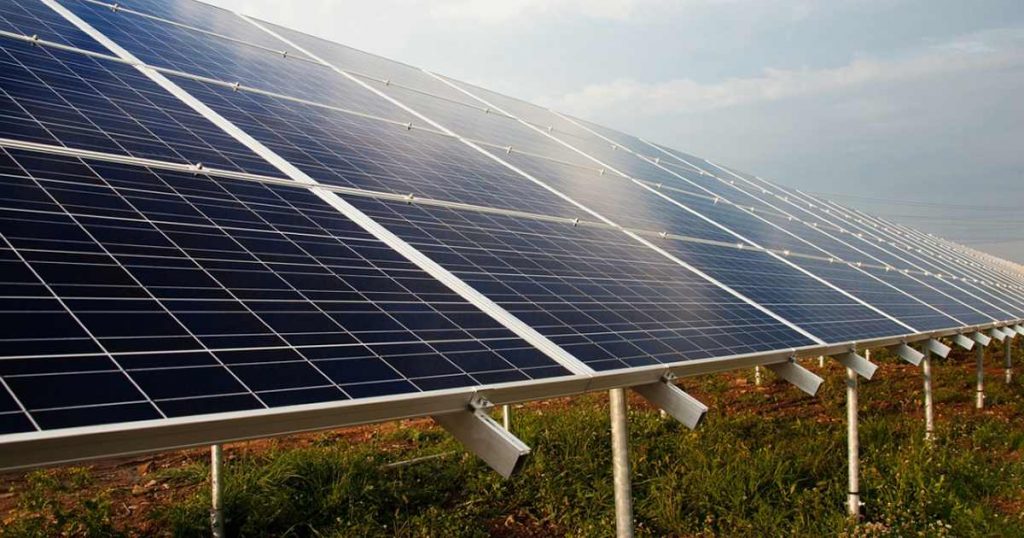South Australia’s State Planning Commission has released a discussion paper proposing new planning policies for the state’s large-scale renewable energy sector.
SA’s love affair with large-scale renewables shows no signs of cooling off. As we recently mentioned, South Australian Energy Minister Dan van Holst Pellekaan has stated more than 10GW of large-scale wind and solar energy projects are on the drawing board for the state.
With so much renewables activity and changes in technology, planning policies need to keep pace says the Commission.
A related discussion paper has been released ahead of public consultation on the state’s Planning and Design Code later this year, updates to which are touted to be the biggest modernisation of South Australia’s planning system in more than two decades.
“The introduction of the new state-wide Planning and Design Code in July 2020 provides an opportunity to update our policies to reflect new forms of energy generation, storage and distribution,” said State Planning Commission member Allan Holmes. “It is also an opportunity to provide improved guidance for industry regarding the intensity, location and impacts of these developments to address community and environmental concerns.”
Proposed Changes For Large-Scale Solar
While most of the proposed changes relate to wind farms, some are also on the cards for large-scale solar energy facilities. The Commission says there are relatively few planning policies specifically dealing with solar farms in the existing planning system.
For example, there are currently no setbacks stipulated for solar farms; i.e. the minimum distance solar panels or other equipment can be placed from a development site’s boundary. Under the proposed changes, there will be a 500-metre solar farm setback from conservation areas, a 100-metre setback from township boundaries and 30 metres from neighbouring land.
Additionally, current policies don’t specifically restrict solar farms from being established in environmentally sensitive zones or where landscape character attributes are more prominent. Under the new system, large scale solar farm developments would be discouraged from areas of high environmental, scenic or cultural value.
Solar farm developments in South Australia also aren’t currently required to incorporate wildlife corridors. It has been proposed this be changed to encourage the assistance of movement of wildlife through:
- incorporating wildlife corridors and habitat refuges; and
- avoiding the use of extensive security or perimeter fencing; or
- incorporating fencing enabling passage of small animals without unreasonably compromising facility security.
The discussion paper also states consideration needs to be given to restricting the development of large scale solar farms on more productive agricultural lands.
As for battery storage, the Commission says this does not require new policies, except where perimeter landscaping is required to help obscure or minimise the industrial appearance of battery storage units from adjoining land or residences.
Formal public consultation on the draft Code will commence in October this year.
The document, Discussion Paper on Proposed Changes to Renewable Energy Policy in the Planning and Design Code, can be downloaded here. Informal feedback can be submitted ahead of the public consultation period to [email protected]


 RSS - Posts
RSS - Posts



with all these solar farms going up and the additional solar on houses and wind farms and the closing of at least 4 power plants why is electricity prices still rising .Surely all this free power means that the turbines which work on demand would slow down using less fuel there fore why aren;t the savings flowing on to consumers other than housing trust tenants only.the only ones who is realy benifitting is the governmednt and the power companies.
Hi Mitchell,
There are numerous reasons, but the main one – in my view – is: we don’t have a stable coherent national policy that recognizes the need for a planned transition to renewables (however one defines the term ‘renewables)’ and also includes minimum targets regarding progress towards the end objectives.
Thus there is no real ‘commitment’ to actually doing something, because if you do, then the ‘rules’ are likely to get changed on you at the next election.
At odd times though, a ‘thought bubble’ gets acted upon, and then effort gets diverted into fixing up the shambles caused.
A prime example (in miniature) is the recent Victorian saga regarding solar system subsidies. Short-lived fortunately, but nonetheless much wheel-spinning, money, time and energy spent by many protesting, holding meetings, writing submissions etc etc,. just to merely to bring Vic back to where it was before it all started. Someone has to pay the ‘diversion costs’ related to all of that
You can’t ‘plan what to do’, then no one can agree on ‘what to actually do’ either.